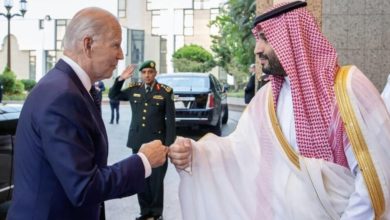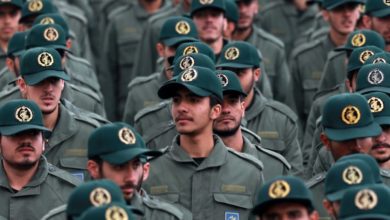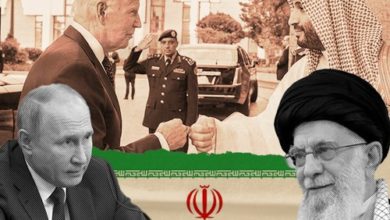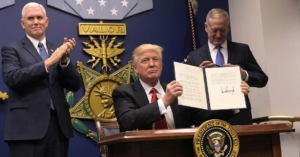
Donald Trump ran in 2016 on a mixed, contradictory platform of unchecked racism and xenophobia combined with a relatively non-interventionist foreign policy when compared to his hawkish Democratic opponent. Trump repeated often that he had been opposed to the Iraq War from the start (which was, like many things he says not 100 percent accurate, given his vacillating opinions at the time). He made clear that he believed the Iraqi people would have been better off without the U.S.-led war that toppled their government and threw the entire country into the chaos which characterizes it today. This position proved a stark contrast to the overtly bloodthirsty Hillary Clinton, who was (correctly) tagged as a consistently enthusiastic cheerleader for U.S. wars of aggression and imperialistic foreign policy.
Given the extreme right-wing nature of the Trump administration and Trump agenda as they come into focus, it should come as no surprise that Trump’s foreign policy shows signs one would expect of a nation preparing for world war; all within just weeks of his inauguration.
On January 27, one week after assuming office, Trump signed an executive order (“Rebuilding the U.S. Armed Forces”) for a tremendous expansion of all U.S. conventional, nuclear and cyber warfare capabilities with the obvious intent of countering Russia and China (nuclear “near-peer competitors”, as the order specifies). Most worryingly, the order also explicitly emphasizes a more active future role of nuclear weapons in U.S. foreign policy, ranging from “modernizations” of the U.S. nuclear stockpile and missile defense systems, increasing their role as a means to “deter 21st century threats” and to “achieve Presidential objectives should deterrence fail.” Nuclear weapons are to be stockpiled and their modernizations are ordered to be ready for use by 2020.
Greater readiness for Middle East wars
As if such declarations and schemes alone were not enough to warrant serious alarm, the executive order goes even further, ordering greater readiness for U.S. military actions against ISIS in Iraq and Syria, while also targeting Iran, a country that has long been on the U.S. hit list and which Trump has gone on record declaring the “number one terrorist state.” Trump’s continued promises to “eradicate” ISIS and so-called “radical Islam” further falls in line with comments from the other hand-picked, far right cabinet members of the administration.
Defense Secretary John “Mad Dog” Mattis favors a strong, antagonistic stance towards Iran. Sanctions against Iranian, Lebanese and Chinese persons and entities accused of supposedly supporting the Iranian ballistic missile program have been announced by the Trump administration. The administration’s opportunistic attempt to leverage Russia in pressuring Iran has yet to yield results (a transparent scheme the Russian Foreign ministry has been visibly unimpressed by, rebuking Trump’s sensationalist rhetoric while standing by their allies in Tehran). However, the diversity of these attacks on Iran in particular illustrate that it is shaping up to be a major target for renewed hostilities and destabilization under Trump’s presidency.
Beyond Iran, Mattis and others are tasked with expanding current actions against ISIS and other targets of the United States, including increased deployment of U.S. troops onto Syrian soil. At least a portion of such a presence is alleged to be for the establishment of U.S.- military-run “safe zones” to conduct operations under the guise of shepherding refugees, the very refugees that the Trump administration has vilified. This would be another flagrant violation of Syrian territory based on the pretext of humanitarianism while U.S. aircraft soar overhead on their bombing raids. Though qualitatively consistent with previous U.S. forays into foreign war and occupation, the sheer depth of the hypocrisy of the U.S. attitude towards the refugee crisis it was instrumental in creating (and is worsening daily) nonetheless never ceases to amaze.
Bannon predicts war with China
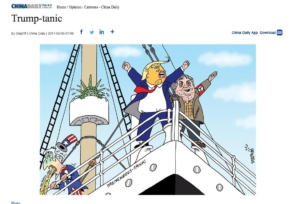
Of all Trump’s cabinet members however, few are as infamous as Steven Bannon. The former editor of the alt-right mouthpiece Breitbart News shocked audiences when he claimed that he expected war to erupt between the U.S. and China in “five to 10 years” over the various South China Sea disputes. Bannon’s white supremacist history and policy proposals combined with his staunch militarism did not go unnoticed by Chinese commentators. Chinese responses have been calm yet firm, with not-so-subtle indications of being thoroughly unimpressed with his conduct (in one example, a political cartoon depicting Bannon with a Nazi “Trump” armband circulated in the government-run China Daily).
Taken as a whole, it is difficult to fathom how the militarism of the Trump agenda could be anything other than a prelude to escalated imperialist war on fronts both old and new. In this, Trump is truly a worthy successor to Obama; a president elected on a platform of hope and change for his constituency (that for many included de-escalation and an end to a series of directionless, costly wars) while doing everything in his power to drive the U.S. further headlong into the very armed conflicts that have characterized the post-9/11 world. Only this time, Trump and his cronies seem intent on drawing Iran and China into a dangerous game for which they have waited for; a showboating and reckless buildup of militarism at the expense of the U.S. taxpayer, the outcome of which can be nothing but the continued destabilization of every land and territory unfortunate enough to be located in the oncoming path of U.S. empire. All progressive and revolutionary people must resist this dangerous course.


